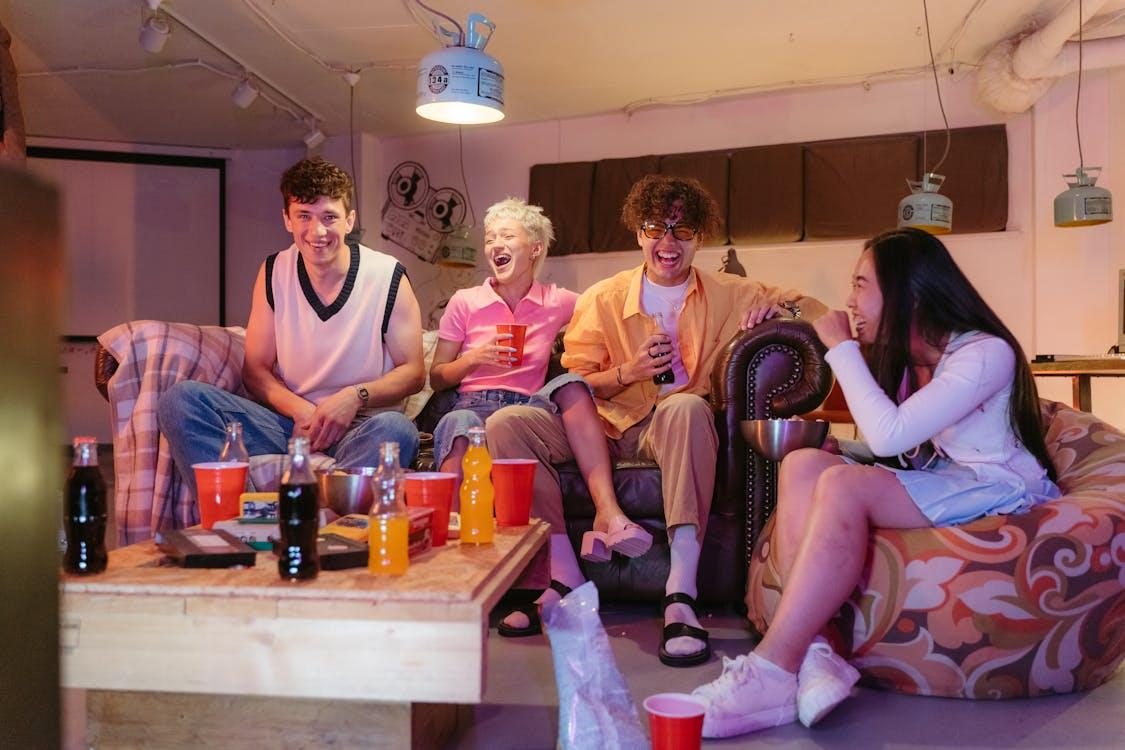
Basements often feel like an afterthought, but they have the potential to be just as bright and comfortable as any other part of the house. Instead of leaving them dark and unused, homeowners are finding creative ways to make these spaces open, inviting, and practical. The right choices in lighting, layout, and materials can completely change how a basement looks and feels. However, accounting for your regional weather is crucial.
In Grand Rapids, for example, basement conditions can shift depending on the season. Humidity, drafts, and moisture buildup can affect comfort. A basement that feels dry, warm, and airy throughout the year becomes a natural extension of the home rather than an extra storage space.
Keep the Layout Open
Crowded layouts make basements feel smaller than they actually are. Removing unnecessary walls, using multi-functional furniture, and arranging seating to promote flow creates a more open and welcoming layout. Instead of dividing the basement into separate rooms, homeowners are opting for spaces that feel connected and flexible.
Some basements still need a level of separation, but that doesn’t mean closing everything off. Glass partitions, half-walls, and low-profile furniture help define different areas without making the space feel boxed in. Sleek, space-saving furniture keeps walkways open while giving each section of the basement a clear purpose.
Hire Remodelers for a Functional Design
A basement makeover sounds exciting, but outdated layouts and hidden structural issues can make the process overwhelming. Many homeowners work with Grand Rapids basement remodeling experts to avoid common problems like uneven flooring, poor ventilation, or awkward layouts. Professionals understand how to make basements more functional, whether by adjusting ceiling height, improving insulation, or optimizing lighting placement.
Working with a remodeler also helps in customizing the space. Some homeowners want a home theater, while others need a multi-purpose area with a workout zone and a lounge. A professional team helps shape the layout so that everything flows smoothly while making the basement feel connected to the rest of the home.
Install Under-Cabinet or Accent Lighting
Overhead lights are useful, but they don’t always reach every part of a basement. Installing under-cabinet and accent lighting helps eliminate dark corners and adds a welcoming touch. LED strips under shelves, cabinets, or staircases create soft, even lighting that makes the space feel more inviting.
Accent lighting also brings out design details that might go unnoticed. Bookshelves, artwork, or architectural features stand out more when highlighted with soft lighting. Choosing a mix of bright white and warm lighting helps separate different zones while giving the basement a cozy, layered look.
Add Reflective or Glossy Finishes
Light can struggle to travel in spaces with dark, matte surfaces, which is why homeowners are turning to reflective and glossy finishes to brighten their basements. High-gloss paint on walls, glass furniture, and metallic decor helps bounce light around the room. Likewise, adding a mirror opposite a window or using glossy tiles creates a noticeable difference in brightness.
Flooring choices also affect how open a basement feels. Shiny materials like polished concrete, light-colored hardwood, or lacquered tile help maximize light reflection. A well-placed area rug adds warmth without absorbing too much light, creating a space that feels both cozy and open.
Use Rugs to Define Spaces
Basements often serve multiple purposes, from entertainment areas to home offices or guest spaces. Instead of dividing everything with walls, rugs help create defined zones without making the space feel closed off. A large area rug under a seating arrangement makes a lounge area feel cozy, while a smaller rug under a desk can separate a workspace from the rest of the basement.
Choosing light-colored or textured rugs adds warmth and personality without weighing down the space. Patterned designs create visual interest, while neutral tones keep things open and airy. Rugs also help with sound absorption, making the basement feel more comfortable for conversations, movie nights, or work calls.
Maintain an Uncluttered Design
Too much furniture, decor, or unnecessary storage can make any space feel smaller, and basements are no exception. Keeping the design uncluttered and intentional helps create a sense of openness. Built-in shelving, hidden storage, and multi-use furniture make it easier to keep everything organized while maintaining a clean and streamlined look.
Leaving some open space prevents the basement from feeling crowded. Instead of filling every corner with furniture, allowing some breathing room between pieces makes the area feel larger. Choosing a few statement pieces rather than overloading the room with decor creates a stylish and functional design that doesn’t feel overwhelming.
Use Glass Doors
Traditional solid doors block off the light and make basements feel separate from the rest of the home. Glass doors create a smoother transition, allowing natural light to pass through while maintaining some level of separation when needed. Sliding glass doors or French doors work well for home offices or guest rooms, keeping spaces feeling open without sacrificing privacy.
For basements that need sound control, frosted or tinted glass doors offer a good balance. They allow light to filter through while still providing some privacy for different areas. Swapping out solid doors for glass makes a noticeable difference in how open and connected the basement feels.
Use Light Colors to Brighten the Space
Wall color plays a major role in making a basement feel open and inviting. Lighter shades like soft gray, beige, or crisp white reflect light better than dark colors, instantly making the space feel larger. Even subtle pastel tones add warmth without making the room feel heavy.
Adding contrast through decor and furniture prevents an all-light color scheme from feeling too plain. Wooden accents, colorful throw pillows, or textured fabrics add depth while keeping the overall look bright and airy. Painting walls in light, neutral tones provide a versatile backdrop that works with different design styles and keeps the basement from feeling dark.
A bright, open basement doesn’t require a complete overhaul—small design choices make a big impact. Thoughtful lighting, open layouts, and smart material choices all help create a space that feels comfortable and inviting. Keeping the design simple, using reflective surfaces, strategic lighting, and open layouts, allows the basement to feel more connected to the rest of the home. With the right updates, any basement can become a functional, enjoyable space that people actually want to use.
Write and Win: Participate in Creative writing Contest & International Essay Contest and win fabulous prizes.


